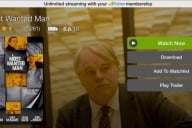You have /5 articles left.
Sign up for a free account or log in.
Monday’s IHE article about Open Source lecture capture tools offers yet another reminder about the link between instructional resources, instructional expectations (entitlements?), and the campus IT infrastructure.
Much like learning management systems (LMS) a decade ago, or podcasting just a few years ago, lecture capture is an emerging/arriving technology: data from the 2009 Campus Computing Survey indicate that 3.5 percent of college courses make some use of lecture capture technology, up from 3.1 percent in 2008; the fall 2009 numbers range from 2.3 percent in private four-year colleges to 6.3 percent in public universities.
These early numbers for the deployment of lecture capture technology are on par with podcasting (3.4 percent of classes in 2008 vs. 3.9 percent of classes for all institutions participating in the 2009 Campus Computing Survey). And both podcasting and lecture capture seem likely to follow the trajectory witnessed by the deployment of classroom clickers, which rose from 3.2 percent in 2005 to 6.5 percent of classes in fall 2009. As with lecture capture, the numbers for clickers and podcasting vary by sector. Like clickers and perhaps podcasting, I suspect that lecture capture is more likely to be used in (large) lower division courses than in (smaller) upper division classes or graduate seminars.
I don’t doubt the value of offering students the opportunity to “go back” to review a lecture. Indeed, college students have been doing this for decades, beginning in the late 1960s and early 1970s when they began to bring portable cassette recorders into campus lecture halls.
As growing numbers of institutions offer online courses and programs, captured lectures from on-campus courses could be an important source of content for many online courses. At present however, that’s not necessarily the case: only an eighth (12.2 percent) of the more than 180 senior campus officials responsible for online education programs who participated in the fall 2009 Managing Online Education (MOE) Survey conducted by WCET and The Campus Computing Project indicated that “prerecorded long (over 10 minute) video segments” were “widely used” in their institution’s online education programs. Just under half the MOE survey participants (48.1 percent) indicated that long video segments were “somewhat used” in their institution’s online programs, while just over a sixth (17.7 percent) stated that long video segments were rarely used.
The deployment numbers for video segments in the 2009 MOE survey are low compared to the use of audio content (11.6 percent report “widely used” and 68.5 percent report “used somewhat”), and asynchronous text-based discussion (75.7 percent report “widely used”).
At the risk of being a contrarian, or even just a digital curmudgeon, I wonder what happens to “all that stuff” that colleges and universities capture and then archive.
Anecdotal evidence, which should always be cited with caution, suggests that online lectures may provide a disincentive for some students to attend class. I’ve heard this about undergraduates for several years. More recently I’m beginning to hear stories about med students who bypass class because they prefer the convenience, comfort, and control provided by online lectures, which are increasingly available at many medical schools.
The rising deployment of lecture capture technology raises some interesting instructional issues. Inquiring minds might like to know the instructional impact of lecture capture on class attendance and student attention – both in class and online. What’s the profile of students who routinely access online lectures: are premeds (think organic chemistry) more likely to access lecture archives than their peers in majoring in business, education, engineering, literature, physics, or sociology? Do students who routinely review online course lectures do better academically than their peers?
And beyond the instructional issues, there are some really BIG managerial and operational issues involved when campuses deploy lecture capture technology. For example:
- Who owns it? If my campus encourages me to have my lectures recorded, who owns – and by extension – controls the content? What agreements – explicit or implied – apply to the audio or video archive of my captured lecture?
- Who catalogs it? We know that my campus will post my captured lecture on a campus server. But who catalogs – tags – the lecture before it is posted? Is it sufficient to identify the lecture as Green/Widgets234/Fall10/Lect3?
- Who uses it? If I post a video to YouTube.edu I get information about the number of people who have viewed my stuff. So do the people who may be looking for my widgets lecture on YouTube.edu. Will my campus provide similar information to me about my lectures on a campus server? What if I don’t want that information to be public?
- Who controls access? Can I limit access just to the students who are in my class? Do I have a choice, given the way my campus posts and manages lecture archives?
These issues involve IP – intellectual property. Recall, for a moment, one of the driving mantras of the dot.com era: “content is king.” If you are a faculty member who has developed a good course and effective lectures, you may believe that “my content should be king – and I should have opportunities to monetize my content.” (Monetize: another one of those wonderful terms from the dot.com era.)
Yet policies regarding captured content and curricular resources are not clear on many campuses. According to the Campus Computing Survey, as of fall 2009 less than three-fifths (56 percent) of campuses had a “formal policy regarding the ownership of web-based curriculum resources and intellectual property developed by faculty.” (The fall 2009 numbers range from 41 percent for private four-year colleges to 77 percent for public research universities.) Moreover, the number of campuses reporting policies to address the ownership of web-based curricular resources has changed little from the 52 percent posted in the 2003 Campus Computing Survey.
Build it – capture it – and they will come? Perhaps.
But even as we build the capacity to capture lectures and as we create digital archives for other kinds of curricular content, we also need to plan for what we will do with it and how to deploy it effectively: how to catalog and access it; how to provide feedback to the content creators and providers; and how to allow or limit access according to the provider’s preferences
As with so many things that involve IT these days, we should be careful what we wish for. And we should also plan carefully and thoughtfully for its eventual arrival.


